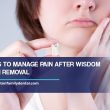Introduction
Finding the best orthopedic shoes can feel overwhelming when faced with countless brands, designs, and features. Whether you’re dealing with foot pain, recovering from surgery, or simply want superior support, orthopedic footwear can dramatically improve your daily comfort and overall foot health. In this guide, we’ll explore what makes orthopedic shoes different, the key features to look for, and tips to choose the right pair for your lifestyle.
What Are Orthopedic Shoes?
Orthopedic shoes are specifically designed to support the structure and mechanics of the foot, ankle, and leg. Unlike regular footwear, they offer enhanced cushioning, arch support, and motion control to relieve pain and prevent further injury. The best orthopedic shoes are not just for seniors or people with foot conditions—they’re for anyone who wants improved comfort and posture during daily activities.
Key benefits of orthopedic shoes include:
- Enhanced support for arches, heels, and ankles
- Improved alignment of the foot and lower body
- Pressure relief for sensitive areas
- Better balance and stability when walking
- Long-term protection for joints and ligaments
Who Can Benefit from Orthopedic Shoes?
Orthopedic shoes are beneficial for a wide range of people. You may need them if you experience:
- Chronic foot pain, plantar fasciitis, or heel spurs
- Diabetes-related foot issues
- Swelling in feet or ankles
- Bunions, hammertoes, or arthritis
- Recovery after foot or ankle surgery
- Occupations requiring long hours of standing
Even if you have healthy feet, investing in the best orthopedic shoes can prevent potential injuries and ensure lasting comfort.
Key Features of the Best Orthopedic Shoes
To ensure you’re choosing the best shoes, look for these essential features:
- Arch Support: Good arch support distributes pressure evenly across your feet and prevents overpronation or supination. This helps relieve stress on your knees and hips as well.
- Cushioning and Shock Absorption: High-quality midsoles and insoles reduce the impact of walking or running, protecting your joints from stress.
- Wide Toe Box: A spacious toe area reduces friction, prevents blisters, and accommodates conditions like bunions or hammertoes.
- Adjustable Closures: Features such as Velcro straps or laces allow for a custom fit and better support, especially if your feet swell during the day.
- Breathable Materials: Lightweight, breathable fabrics prevent overheating and keep your feet dry and comfortable.
- Removable Insoles: This allows you to insert custom orthotics or replace worn-out insoles easily.
Top Styles of Orthopedic Shoes
While the best orthopedic shoes prioritize function, modern designs ensure they look stylish too. Here are the most popular types:
- Orthopedic Sneakers: Great for daily walks, light workouts, or long hours on your feet.
- Orthopedic Sandals: Perfect for warm weather, offering both breathability and arch support.
- Orthopedic Dress Shoes: Ideal for office wear or formal occasions without compromising comfort.
- Orthopedic Slippers: Designed for indoor use, giving you the same support at home as outdoors.
By selecting the right style for your needs, you’ll enjoy the benefits of orthopedic support no matter the occasion.
How to Choose the Best Orthopedic Shoes for You
Selecting the right orthopedic shoes is about more than picking the first pair labeled “orthopedic.” Follow these steps to ensure you make the best choice:
- Get Professionally Measured: Feet change over time. Having your foot size and arch type measured by a specialist can help you find a perfect fit.
- Consider Your Foot Condition: If you have a specific issue like plantar fasciitis or diabetic neuropathy, look for shoes specifically designed for that condition.
- Test Comfort Before Purchase: Walk around in the shoes for at least a few minutes to assess comfort, support, and fit.
- Check for Return Policies: Since orthopedic shoes are an investment, make sure you can exchange or return them if they don’t fit correctly.
- Consult a Specialist: If you’re unsure which shoes suit your needs, consult an orthopedic specialist or podiatrist for personalized recommendations.
For expert guidance, reputable medical centers such as drkelkarhospital.com offer consultations on foot and ankle health, including advice on choosing the right orthopedic footwear.
Maintaining Your Orthopedic Shoes
To maximize the lifespan and effectiveness of your orthopedic shoes:
- Clean regularly: Remove dirt and dust to maintain the material and prevent odors.
- Replace insoles: Worn-out insoles reduce support—replace them when needed.
- Rotate pairs: If possible, own more than one pair to reduce wear and tear.
- Store properly: Keep them in a cool, dry place to preserve their shape and material.
Common Myths About Orthopedic Shoes
Many people hesitate to buy orthopedic shoes due to misconceptions. Let’s clear up a few:
- Myth 1: They’re only for the elderly.
- Reality: People of all ages can benefit from orthopedic support, especially those with active lifestyles or foot issues.
- Myth 2: They’re always bulky and unattractive.
- Reality: Modern orthopedic shoes are stylish, lightweight, and available in many designs.
- Myth 3: They’re too expensive.
- Reality: While quality orthopedic shoes can cost more upfront, they save money long-term by reducing medical costs and replacing cheap, unsupportive shoes.
The Long-Term Benefits of Orthopedic Shoes
Investing in the best orthopedic shoes is an investment in your health and mobility. Over time, these shoes can:
- Reduce pain and discomfort
- Improve posture and balance
- Prevent injuries or worsening of foot conditions
- Enhance your confidence and energy in daily activities
By prioritizing your foot health now, you set yourself up for a more active and pain-free future.
Conclusion
The best orthopedic shoes combine style, comfort, and medical-grade support to protect your feet and improve your quality of life. Whether you’re dealing with chronic pain, recovering from surgery, or simply want more supportive footwear, orthopedic shoes are a worthwhile investment. Remember to consider features like arch support, cushioning, and a wide toe box, and don’t hesitate to seek professional advice for your specific needs.
By choosing wisely and maintaining your shoes properly, you’ll enjoy better comfort, mobility, and overall foot health every step of the way












